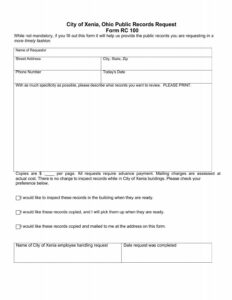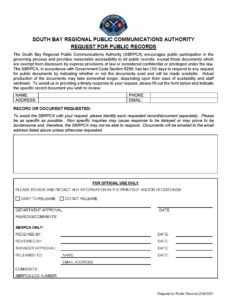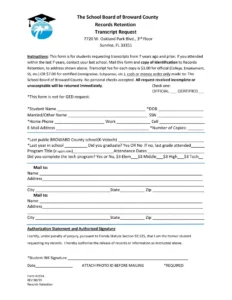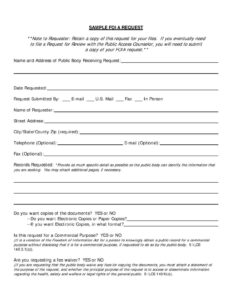Utilizing a pre-designed format offers several advantages. It streamlines the process for both the requester and the agency processing the request, reducing potential delays and misunderstandings. Clear communication minimizes ambiguity and ensures requests are handled efficiently. Furthermore, a well-drafted form can help individuals exercise their right to access information effectively, fostering transparency and accountability within government institutions.
This foundation in understanding access to government information will allow for a deeper exploration of the specific requirements and nuances within different jurisdictions and agencies.
Key Components of a Public Records Request
Effective requests for government information share common structural elements. These components ensure clarity and completeness, maximizing the likelihood of a successful response.
1: Requester Information: Clear identification of the individual or organization making the request, including full name, mailing address, email address, and phone number, is essential for facilitating communication and delivery of the requested records.
2: Agency Information: Correctly identifying the specific government agency holding the desired records is paramount. This includes the agency’s full name and the specific department or office, if known.
3: Description of Records: A precise and unambiguous description of the requested records is crucial. Specificity regarding dates, titles, document types, involved individuals, or relevant keywords significantly aids the agency in locating the information.
4: Request Date: Including the date of the request allows both the requester and the agency to track the timeframe for processing and fulfilling the request.
5: Preferred Format: Specifying the preferred format for receiving the records (e.g., electronic copies, paper copies) facilitates efficient delivery and aligns with the requester’s needs. If no preference is stated, the agency will typically default to its standard delivery method.
6: Legal Basis (if applicable): In some jurisdictions, citing the specific law or regulation mandating disclosure can strengthen the request and provide legal grounding. While not always required, this component can be valuable in complex cases.
7: Signature (if required): Some agencies may require a physical or digital signature to validate the request. Confirming specific agency requirements beforehand ensures compliance and avoids unnecessary delays.
Accurate and thorough completion of these elements ensures efficient processing, reduces ambiguity, and ultimately contributes to a more transparent and accountable government.
How to Create a Public Records Request
Developing a standardized template for public records requests promotes consistency and efficiency in accessing government information. A well-structured template ensures requests are clear, comprehensive, and compliant with applicable regulations.
1: Establish Requester Information Fields: Include designated spaces for the requester’s full name, mailing address, email address, and phone number. This enables efficient communication and delivery of requested materials.
2: Incorporate Agency Information Fields: Provide fields for the governing agency’s name and the specific department or office holding the records. Accurate agency identification is crucial for proper routing.
3: Designate a Detailed Record Description Section: Incorporate a substantial section for describing the desired records. This should allow for specific details such as dates, titles, document types, involved individuals, or any relevant keywords. Clarity in this section is paramount for effective record retrieval.
4: Include a Date Field: A designated space for the request date allows for tracking and management of the request timeframe.
5: Provide a Preferred Format Option: Offer options for specifying the desired format for receiving the records (e.g., electronic copies, paper copies). This caters to individual needs and preferences.
6: Incorporate a Legal Basis Section (if applicable): If relevant, include a section for citing specific laws or regulations supporting the request. This can strengthen the request and provide legal grounding.
7: Include Signature Field (if required): If necessary based on jurisdictional requirements, incorporate a designated space for a signature. This may be physical or digital, depending on agency guidelines.
A comprehensive template incorporating these elements simplifies the request process, reduces ambiguity, and ensures compliance with established procedures, ultimately contributing to increased transparency and accountability.
Access to government information is a cornerstone of a transparent and accountable society. Standardized request forms provide a crucial mechanism for facilitating this access, ensuring clarity, efficiency, and compliance with established procedures. From clearly identifying the requesting party and the relevant agency to precisely describing the desired records, each component of a well-crafted template plays a vital role in the successful retrieval of information. Understanding the nuances of these components, including specifying preferred formats and citing legal bases where applicable, empowers individuals and organizations to effectively exercise their right to access public information.
Leveraging structured approaches to information requests fosters a more informed citizenry, promotes responsible governance, and strengthens the foundations of democratic principles. Continued refinement and utilization of these tools are essential for maintaining and enhancing transparency and accountability within government institutions.



